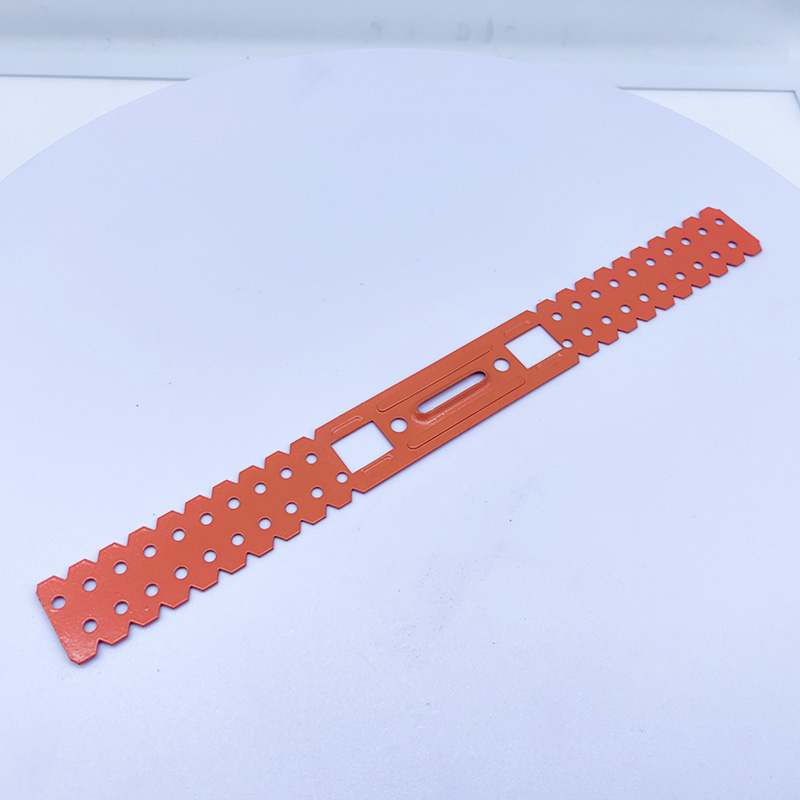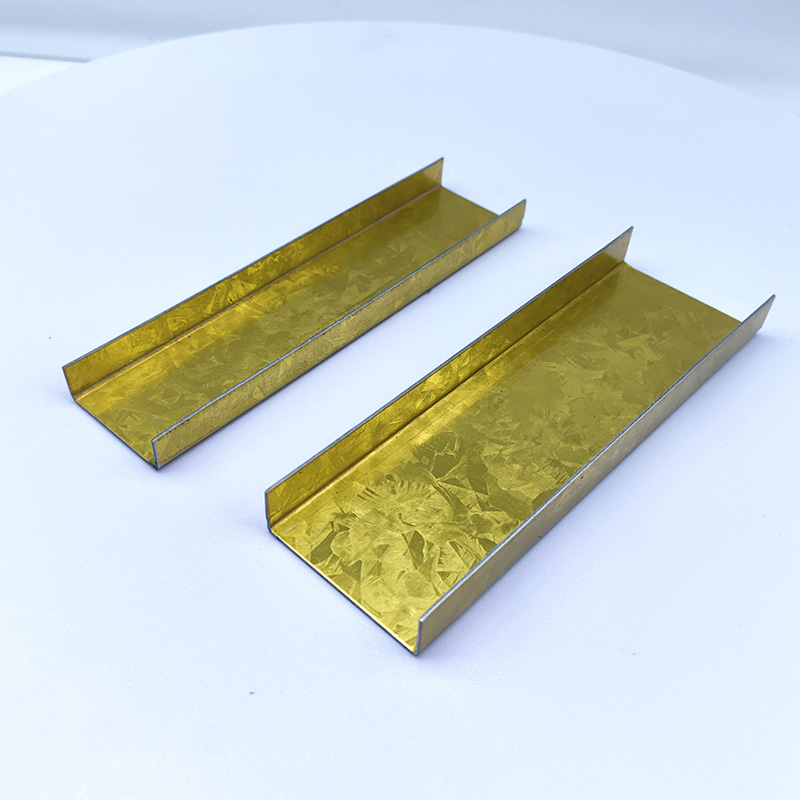The Importance of Ceiling Grids in Commercial and Residential Interiors
2025-02-23 21:37:32
In the field of interior design, whether it’s a bustling commercial space or a cozy home environment, every detail can impact the overall effect and experience. Ceiling grids, a common yet often overlooked element of design, play a crucial role in both settings. While they may not shine like elegant chandeliers or catch the eye like luxurious wallpaper, ceiling grids hold an indispensable position in commercial and residential interiors due to their unique functions and value.
Importance of Ceiling Grids in Commercial Interiors
Space Planning and Layout
In large malls and supermarkets, the rationality of space layout directly affects the shopping experience for customers and operational efficiency for businesses. Ceiling grids act as invisible conductors of the space, cleverly dividing it into distinct functional areas. For example, in a comprehensive shopping mall, ceiling grids can demarcate the clothing section, food court, and entertainment area. When customers enter the mall, a glance upward allows them to quickly identify the area they want to visit, greatly enhancing the convenience and efficiency of shopping. This clear spatial planning not only benefits customers but also aids businesses in store management and product display, improving the overall operational effectiveness of the mall.
Lighting and Ventilation Optimization
Lighting and ventilation are key to ensuring the comfort of commercial spaces, and ceiling grids play a crucial role in supporting both. In terms of lighting, ceiling grids can precisely position and install various light fixtures, such as chandeliers, spotlights, and recessed lights. With thoughtful arrangement, lighting can be evenly distributed throughout the space, avoiding dark corners and providing customers with a bright and comfortable shopping environment. Additionally, areas where products need to be highlighted can benefit from adjustable lights to create unique visual effects that attract customers’ attention.
For ventilation, ceiling grids provide an ideal framework for installing ventilation ducts, ensuring the air circulates evenly across the space. This helps maintain fresh air indoors, effectively regulate temperature, and improve the comfort of both customers and employees. For instance, in a large supermarket, utilizing the ceiling grid system to install a ventilation system allows the air to be replaced [X] times per hour, significantly reducing indoor odors and bacterial growth, creating a healthier and more comfortable shopping experience for customers.
Acoustic Improvement
For commercial venues that require high-quality acoustics, such as conference rooms or restaurants, ceiling grids paired with sound-absorbing materials can significantly improve acoustic performance. The gaps within the ceiling grid can be filled with acoustic materials that absorb and reflect sound waves, reducing noise reflection and echoes. In a conference room, a good acoustic environment ensures smooth meetings and clear communication. In restaurants, reducing noise disturbances provides a quiet and comfortable dining atmosphere, increasing customer satisfaction and loyalty.
Maintenance and Repair Convenience
Commercial spaces, with their frequent usage and complex equipment, often require regular maintenance and repairs. Ceiling grids are designed for ease of maintenance. Their modular structure makes it easier to disassemble and install. When lighting, ventilation systems, or other equipment malfunction, maintenance personnel can quickly open the ceiling grid to repair or replace the devices, without the need for extensive ceiling demolition. This reduces maintenance time and costs, which is especially important for businesses where operational time is valuable.
Importance of Ceiling Grids in Residential Interiors
Enhancing Spatial Layers
In residential interiors, ceiling grids are a powerful tool for enhancing spatial layers. With clever design, ceiling grids can add depth and artistic flair to spaces like living rooms and bedrooms. For instance, in a modern minimalist living room, a simple linear ceiling grid, paired with white paint, creates a sleek and elegant atmosphere. In an European-style bedroom, a ceiling grid with ornate carvings and decorative lines, combined with golden lighting, creates a luxurious, romantic effect. This unique design not only beautifies the space but also visually extends it, making small rooms appear more spacious.
Concealing Wiring and Piping
As the number of household electrical appliances increases, the complexity of wires and pipes also grows. Ceiling grids can cleverly conceal these wires and pipes, making the home environment more tidy and aesthetically pleasing. During installation, electrical wires and water pipes can be laid along the grid structure, and ceiling panels can be installed to fully hide the wiring and piping. This not only avoids the safety risks of exposed wires and pipes but also keeps the living space organized and visually appealing.
Personalized Decoration
Ceiling grids come in a wide variety of materials and colors, offering more personalized design options for home interiors. Different materials and colors can blend with various home styles, allowing for greater design diversity. For example, wooden ceiling grids can create a warm, natural rural style, while metal grids can showcase a stylish, modern industrial look. Colorful ceiling grids can add a lively, joyful atmosphere to children’s rooms or entertainment areas. By choosing the right ceiling grid, homeowners can customize their space to match their preferences and home decor.
Safety Assurance
In earthquake-prone regions, home safety is crucial. Ceiling grids are typically made from sturdy materials, providing strong structural stability. During natural disasters like earthquakes, ceiling grids can effectively disperse and bear the weight of the ceiling, preventing it from collapsing and causing harm to residents. For instance, in countries like Japan, where earthquakes are frequent, many households use earthquake-resistant ceiling grids to ensure the safety of their family members.
Cost-Efficiency Analysis
Initial Cost vs. Long-term Value
Compared to other ceiling treatments, ceiling grids have a relatively low initial cost. Their installation process is simple, requiring less complex construction techniques and fewer labor and material resources. Additionally, because ceiling grids are durable and stable, they can be used for a long time, reducing the cost of replacement and repairs. For example, traditional suspended ceilings may need to be renovated or repaired every few years, but ceiling grids can last for [X] years or more under normal use, significantly lowering long-term maintenance costs.
Energy-saving and Environmental Benefits
In terms of lighting and ventilation optimization, ceiling grids can improve energy efficiency and reduce consumption. Well-planned lighting and ventilation layouts reduce energy waste, thereby lowering electricity bills. Additionally, some new ceiling grids are made from eco-friendly materials that produce minimal environmental pollution during production and use, aligning with modern environmental standards. For instance, ceiling grids made from recyclable materials reduce resource waste and have a lower environmental impact.
Installation and Maintenance Tips
Installation Tips
The correct installation method is essential to ensure that the ceiling grid is secure and level. Before installation, the ceiling must be leveled to ensure that the installation surface is within acceptable tolerance limits. During installation, follow the design plan and installation instructions to ensure that the grid’s spacing is even and the connections are secure. Pay attention to the placement of lights, ventilation devices, and other installations to avoid conflicts with the grid. When installing ceiling panels, ensure they fit tightly against the grid to avoid gaps and looseness.
Maintenance Suggestions
To extend the lifespan of the ceiling grid, regular maintenance and care are necessary. During routine cleaning, use a clean damp cloth to gently wipe the grid, removing dust and stains. Periodically check the connections and fasteners of the ceiling grid. If any are loose or damaged, they should be repaired or replaced promptly. For areas that are prone to moisture, such as bathrooms or kitchens, it’s important to maintain proper ventilation and dryness to prevent rusting.
Case Studies
Commercial Case
At [name of a renowned mall], the ceiling grid is made from a simple white metal material, paired with circular chandeliers and concealed ventilation ducts. This design not only makes the entire mall appear bright and spacious but also clearly divides different floors and areas, guiding customers to their destinations. Meanwhile, the well-planned lighting and ventilation system provide a comfortable and pleasant shopping environment, greatly boosting the mall's foot traffic and sales.
Residential Case
In [a modern minimalist style home case], the living room ceiling grid uses black wooden materials, paired with simple white ceiling panels and linear pendant lighting. This design cleverly combines the simplicity of modern minimalism with the warmth of wood, creating a unique, stylish atmosphere. The ceiling grid also conceals wiring and central air conditioning ducts, making the space more organized and visually appealing.
Future Trends
Material Innovation
With the continuous advancement of technology, new eco-friendly and high-strength materials have vast potential in the application of ceiling grids. For example, new composite materials such as carbon fiber-reinforced composites and nanomaterials, which are strong, lightweight, and corrosion-resistant, are expected to be widely used in ceiling grids in the future. These materials not only enhance the performance and longevity of ceiling grids but also meet higher demands for environmental friendliness and health.
Design Innovation
In the future, ceiling grid designs will focus more on the fusion of form and function. In addition to traditional flat grid designs, there will be more three-dimensional and creative options. For example, combining ceiling grids with artistic installations or smart home systems to create unique visual effects and intelligent features. The design of ceiling grids will also become more personalized and customizable to meet the diverse needs of consumers.
In conclusion, ceiling grids play an essential role in both commercial and residential interior design. They optimize space planning, improve lighting, ventilation, and acoustics, and enhance the aesthetic and safety of a space. With their cost-efficiency and ease of installation and maintenance, ceiling grids offer significant value in both commercial and home settings. By exploring case studies and future trends, we can see that ceiling grids have vast potential in the world of interior design. Therefore, when planning commercial and residential interiors, it’s worth considering the application of ceiling grids to bring more surprise and value to our spaces.

A Double Anti-Rust Gold Partition Wall Stud is a type of steel stud commonly used in the co...

A CD UD Profile Furring Clip U Clamp is a type of metal fastening component used in the ins...

A 60mm Ceiling Grid refers to a type of suspended ceiling system, commonly used in commerci...

38mm Main Tee and 50mm Main Tee refer to the widths of the main tee profiles used in suspen...

